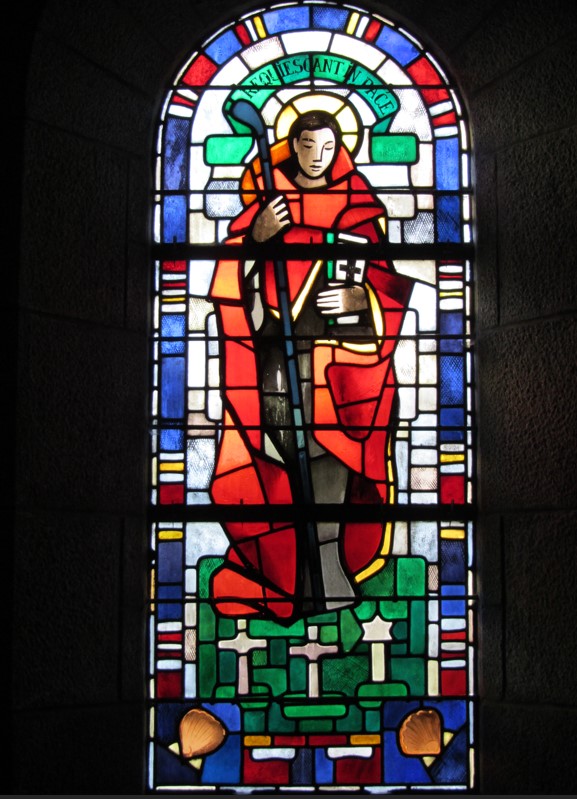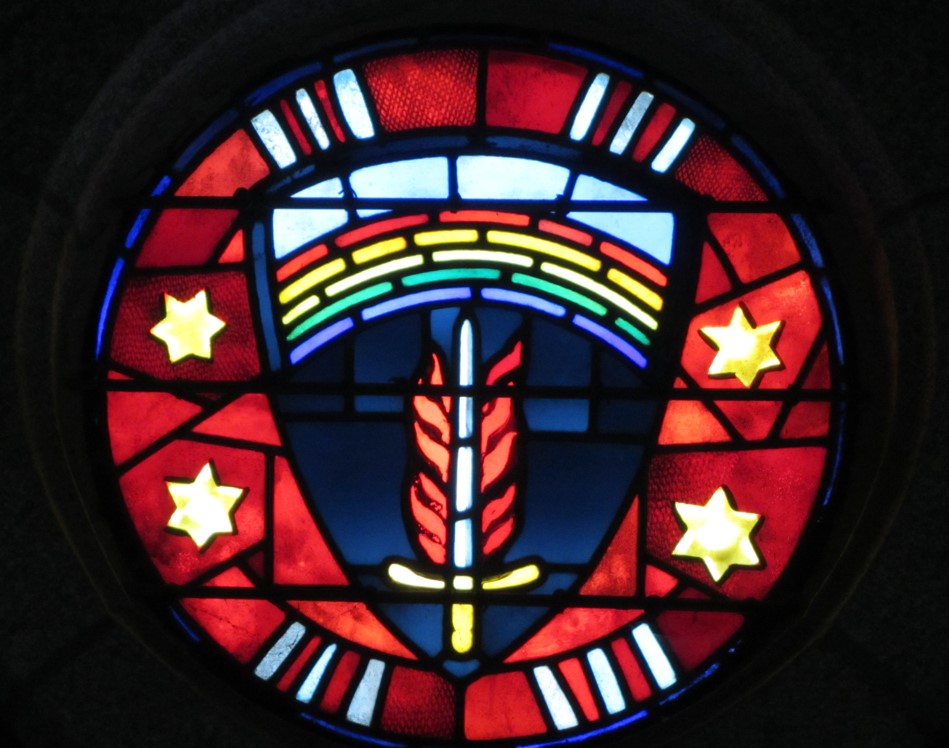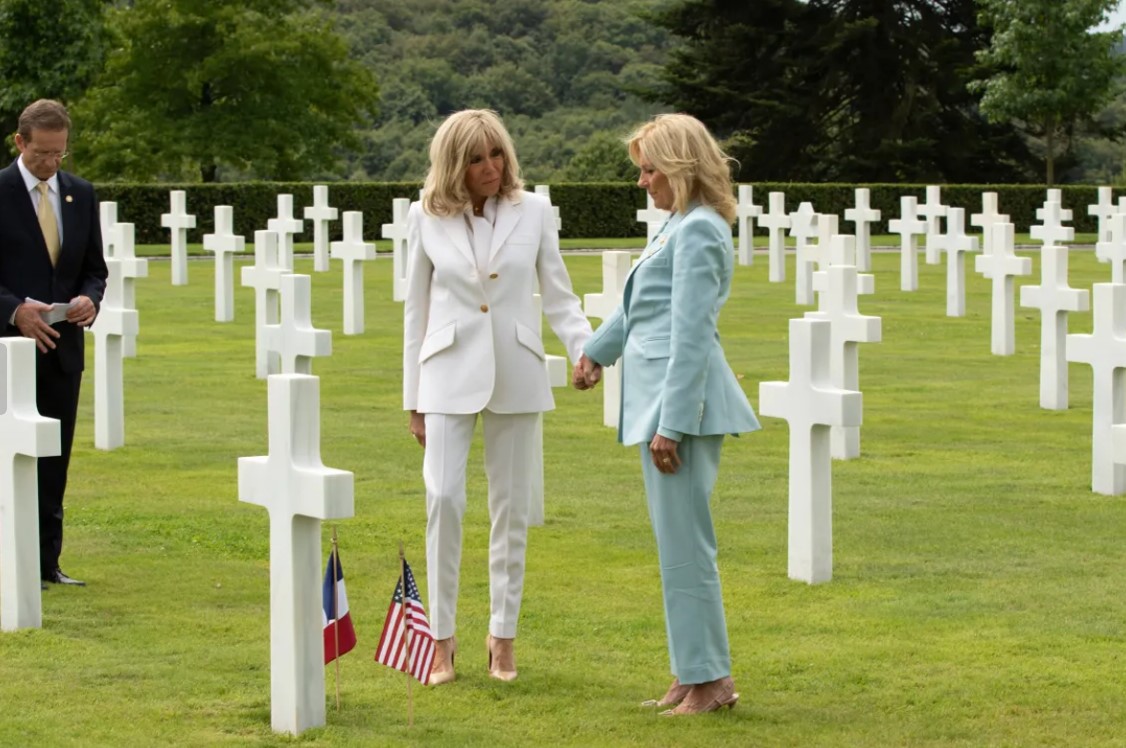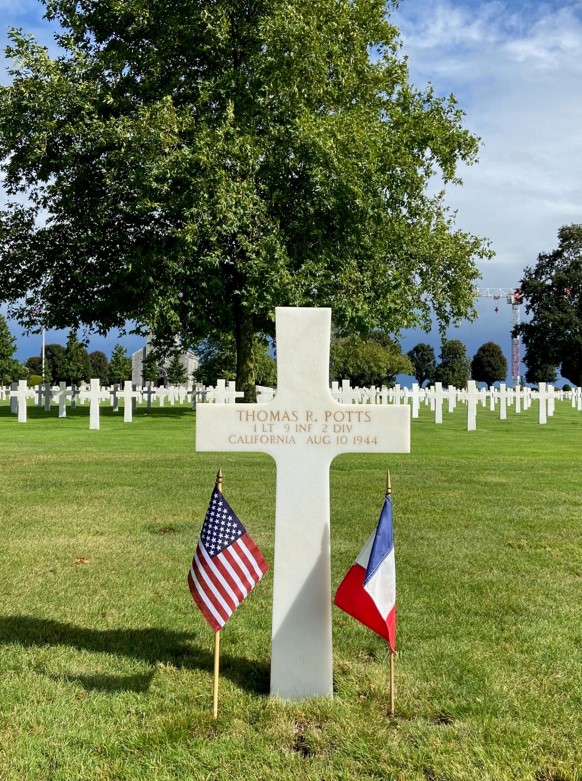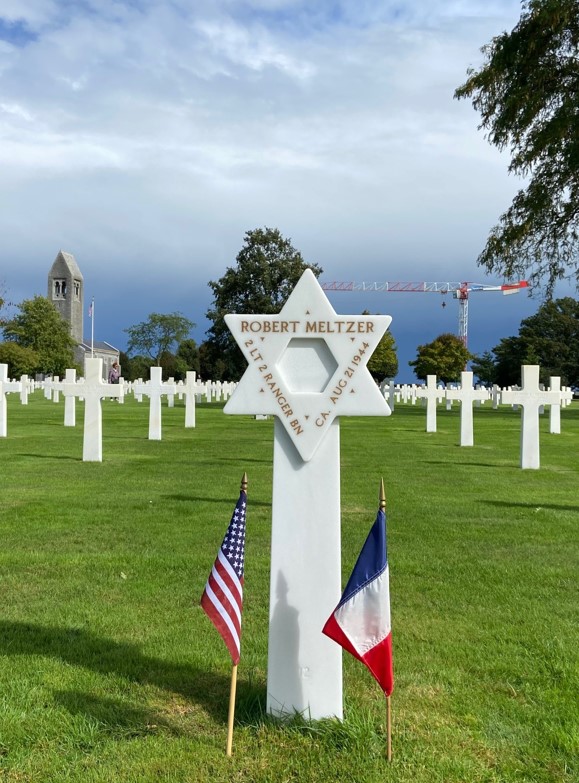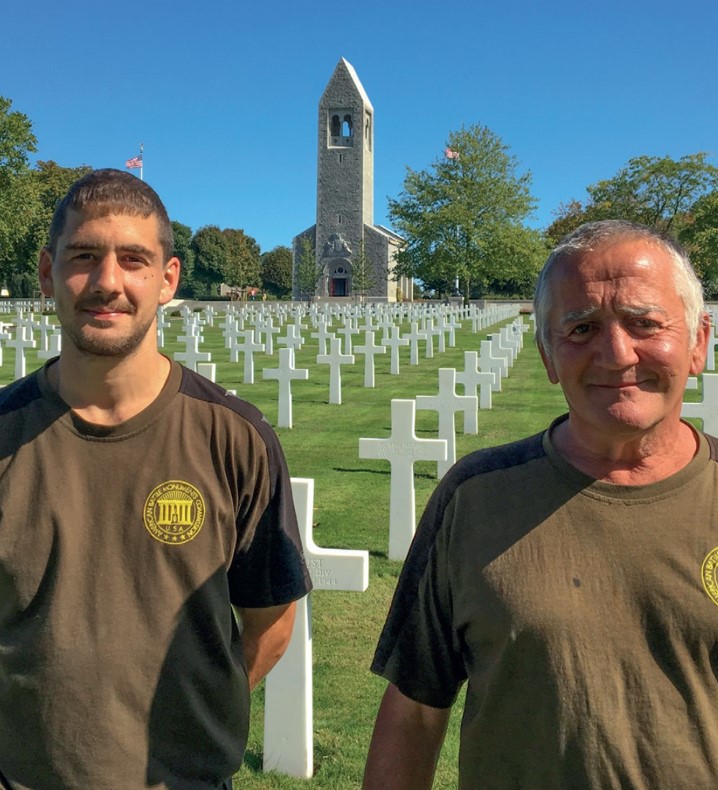Five things you may not know about Brittany American Cemetery
The American Battle Monuments Commission’s (ABMC) Brittany American Cemetery is located in Normandy in the village of Montjoie-Saint-Martin, France, even if its name leads us to believe it is in Brittany. How well do you know this site? Here are five things you may not know about Brittany American Cemetery.
On the way to Santiago de Compostello and Mont-Saint-Michel
Brittany American Cemetery is located in Montjoie-Saint-Martin, Normandy and not in Saint James or Brittany as we could think because of its name. It draws its official name not from its location, but from the campaign that most of its burials are drawn from, the liberation of the Britanny peninsula in fall 1944. The village of Montjoie-Saint-Martin is on the “Routes of Santiago de Compostello” in France and there is a representation of Saint James in the chapel on a stained-glass.
The history of Montjoie-Saint-Martin says that it was the first place (from the top of its hill) where pilgrims could see Mont-Saint-Michel for the first time and exclaimed “O Montjoie”. Saint James and the scallop shells reminds visitors of the pilgrimage paths that lead to Mont-Saint-Michel or Santiago de Compostello in Spain. Every visitor to the cemetery is a modern pilgrim who honors the sacrifice of the servicemembers who never came back home.
A relation to the Supreme Headquarters Allied Expeditionary
The sword and shield motifs of the Supreme Headquarters Allied Expeditionary patch inspired the layout of Brittany American Cemetery as seen from above.
The chapel form the hilt of the sword, with the Wall of the Missing forming the cross piece and the central walkway the blade. The grave plots take the shape of the shield and the horticulture at the end opposite the chapel evokes the rainbow at the top of the SHAEF patch.
The shape of the patch also resembles the scallop shell that is the symbol of Santiago de Compostello and also present in the chapel in our cemetery.
First state visit in 2023
On July 26, 2023, the First Lady of the United States Jill Biden and Brigitte Macron honor U.S. military fallen at Brittany American Cemetery with a visit. It was the first state visit to this ABMC site.
Following the playing of both national anthems, Biden and Macron took part in a wreath laying and headstone sanding ceremony. It came as part of Biden’s visit to Paris, where she delivered remarks at an event with the United Nations Educational, Scientific and Cultural Organization (UNESCO).
A relation with Hollywood
1st Lt. Thomas R. Pott was born in 1914 and was a Hollywood actor who played in more than 80 movies in the 1930s and 1940s under the name of Richard Fiske to honor his great aunt, Minnie Madern Fisk, a famous stage actress from the turn of the century. He loved being an actor, but he left Hollywood to enlist as a private in the U.S. army after Pearl Harbor. He was 28.
Pott served with served with the 9th Infantry Regiment, 2nd Division, the "Manchus" nicknamed because of their service in China in 1900. He landed on Omaha Beach June 7, 1944. He took part in the battles of Saint Lo and Vire but was killed Aug. 10, 1944, in the hedgerows not far away from Brittany American Cemetery where he rests eternally plot J, row 1 and grave 9.
2nd Lt. Robert Meltzer was born June 10, 1914, in Piedmont, California, from Russian Jewish immigrant parents, who met on Ellis Island. After his studies at Berkeley, he was pushed by his friend, Charlie Chaplin to try his luck in Hollywood. His career took off and he became famous as a screen writer. He was also the assistant and writer for Chaplin’s movie The Great Dictator.
On Oct. 13, 1942, Meltzer enlisted in the U.S. Army in Los Angeles, California. As a professional writer, he kept record of his service. He started his career in the Tank Corps and later joined a paratrooper unit and then was transferred into the Rudder’s Rangers (2nd Battalion) at his request. He joined his unit at Colombières June 25, 1944, and moved to Valogne. He then was sent to a chateau near Beaumont Hague July 3, 1944. From August 13-17, he was part of a defensive position to protect bridges on the Mayenne river.
On Aug. 17, 1944, he moved back to the Brittany peninsula. Meltzer was ordered to take a patrol to make contact with the 8th Infantry Division who was supposed to have a group of German prisoners. He led his men through in the hedgerows into a field near Le Folgoet where they met enemy fire. Meltzer and three of his men were killed. He forever rests at Brittany American Cemetery plot I, row 5 and grave 12.
Three generations of the Rocfort family
At Brittany American Cemetery, “like father, like son”, is far more than just a saying. Beginning back in the late 1950s, three generations of the Rocfort family have looked after this World War II cemetery that remembers the sacrifices of more than 4,400 U.S. servicemembers in the rolling countryside of north-west France.
Alain Rocfort began working at BRAC in 1987, following a serious motorbike accident that made it impossible for to him continue practicing as a butcher. However, this change of direction wasn’t nearly as drastic as it may seem. As a child, Alain spent many weekends on the grounds watching and admiring his father Adolphe, who had worked at the cemetery for 32 years.
In 2017, Valentin decided to follow in his father’s footsteps. Having first set up his own gardening business, he was happy to join Brittany American Cemetery and take on new challenges.
Brittany American Cemetery is the final resting place of more than 4,400 servicemembers. In addition, 500 other names are inscribed on its Wall of the Missing. Most of the military honored and commemorated there lost their lives in the Normandy and Brittany campaigns of 1944.
The ABMC’s mission is to honor the service of the U.S. armed forces by creating and maintaining memorial sites, offering commemorative services, and facilitating the education of their legacy to future generations. It was founded in 1923 following World War I and its 26 cemeteries and 31 monuments honor the servicemen and women who fought and perished during World War I, World War II, the Korean War and the Vietnam War, as well as some who fought during the Mexican-American War.
Those sites are a constant reminder of Gen. John J. Pershing’s promise that “time will not dim the glory of their deeds.”
Sources:
Britanny American Cemetery’s team
Historical Services
ABMC Voice, ABMC documents, website and brochures

